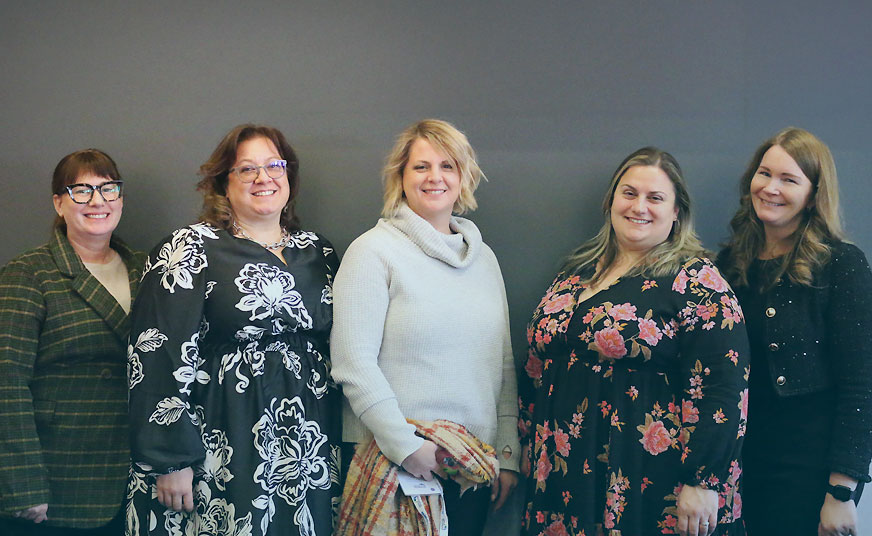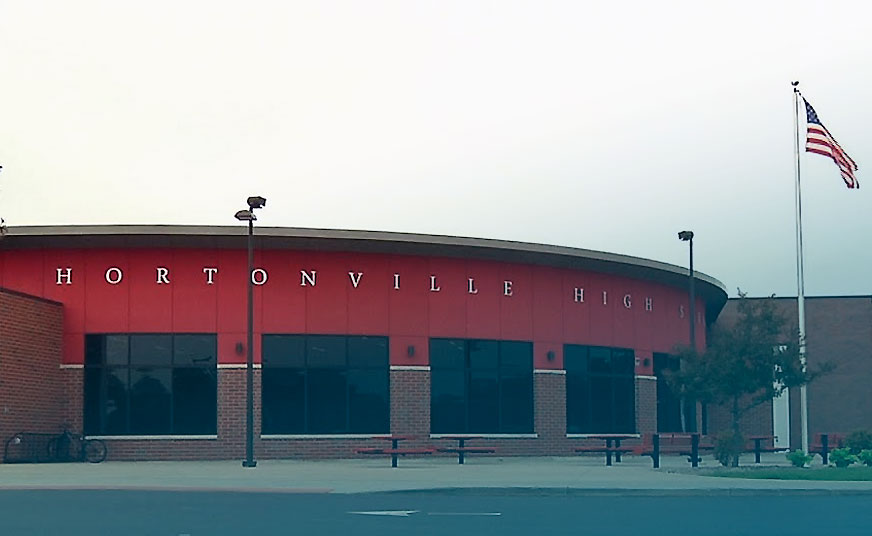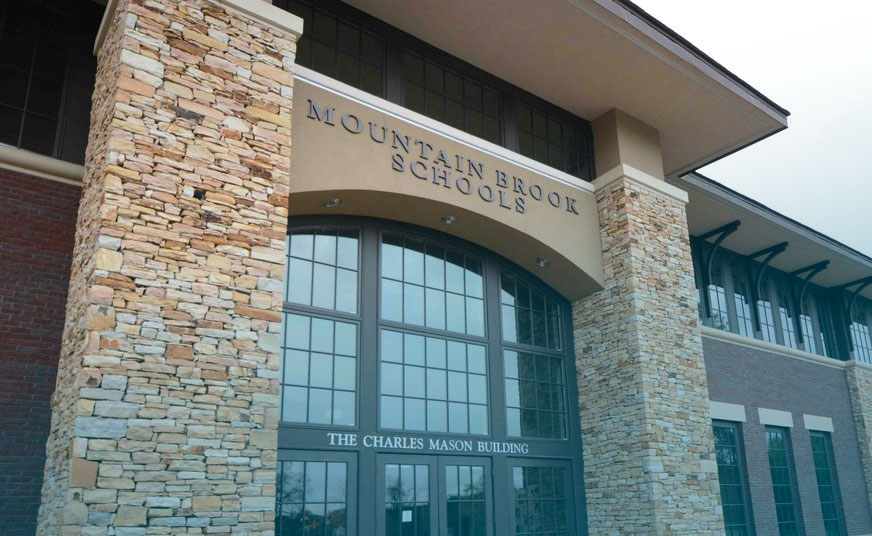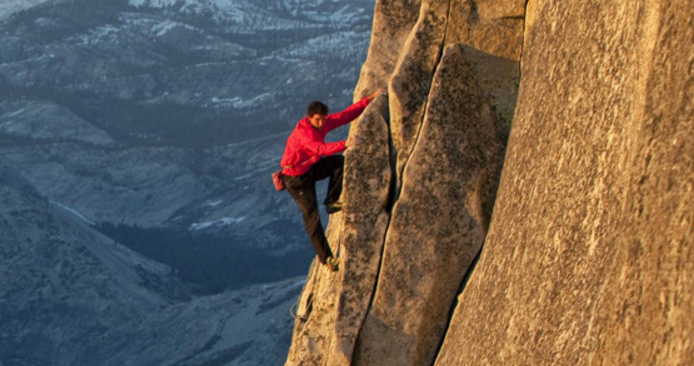Large District Boosts Educator Confidence in Writing IEP Goals
Vancouver Public Schools partners with Goalbook to improve inclusive practices and support teachers in writing standards-aligned IEP goals for over 3,500 special education students.

|
by Sean Sartipi April 9, 2025 |
District Increases LRE from 48% to 70% in Just Two Years
Wisconsin school district creates inclusive learning environments to boost student achievement.

|
by Sean Sartipi April 9, 2025 |
High-Achieving District Overcomes Progress Monitoring Challenges
Alabama school district transforms how they track IEP progress to improve parent communication and student outcomes.

|
by Sean Sartipi April 9, 2025 |
Higher Student Reading Scores Linked to Goalbook Toolkit Usage
Texas school district significantly improves reading scores on state assessment and the MAP® Growth™ assessment with weekly usage of Goalbook Toolkit.

|
by Sean Sartipi April 9, 2025 |
Schools Improve Student Literacy Outcomes with Goalbook
Johns Hopkins study reveals a positive relationship between student reading achievement on the MAP® Growth™ assessment and educator Goalbook Toolkit usage.

|
by Sean Sartipi April 9, 2025 |
Research Shows How Goalbook Impacts Instructional Coaching
Alongside WestEd, we conducted a study at DC Public Schools to examine how Goalbook's UDL resources facilitate differentiated lessons and effective coaching.

|
by Sean Sartipi March 20, 2017 |
Boston Public Schools Partners with Goalbook to Realize Rigor for All Students
Participants report significant growth in their ability to differentiate cognitively demanding instruction.

|
by Ryan Ingram March 9, 2016 |
In order to meet the new, more rigorous learning objectives that aim to prepare students for college and their careers, teachers in Boston Public Schools have embraced Cognitively Demanding Tasks —CDTs for short— in their classrooms.
The difficulty in implementing rigorous learning tasks is due in large part to the myth that they are inherently difficult—and therefore exclusive—to only high-achieving students. Experts in the field, however, will argue that rigorous learning is inherently inclusive.
When the state standards and accountability movement began in the 1990’s, it was conceived as a way to make learning more rigorous in K-12 curricula in an effort to close the college and job readiness gap. In its most recent iteration, schools and districts have found the new state standards difficult to implement because of the perception that more rigorous learning equals harder tasks. This challenge was reflected in teachers’ perception of CDT’s prior to the training Goalbook led, as only 28% indicated they were comfortable with planning and implementing CDT’s in their classrooms.
Dr. William Schmidt, founder and director of the Center for the Study of Curriculum at Michigan State University, defines a rigorous curriculum as “focused, coherent, and appropriately (emphasis added) challenging.” Another leader in the field, Barbara Blackburn, explains that rigor means increasing learning expectations for all students while providing support appropriate to each student.
But rigorous content alone will not close the achievement gap. Robert J. Marzano and Michael D. Toth proposed in their 2014 publication Teaching for Rigor: A Call for a Critical Instructional Shift that paradigmatic shifts in instructional approach must also occur. The authors urged teachers to facilitate student learning by teaching higher-order problem-solving skills rather than simply dispensing content.
Across the nation, teachers are asked to deliver differentiated and rigorous instruction but few are shown how to do it. 20-year teacher Kathy Powers articulated the challenge that fellow teachers faced in her 2013 blog post for National Network of State Teachers of the Year, “What is lacking is the ‘how.’ How is teaching with the new standards different from teaching with the old?” Powers is among a growing chorus of teachers calling for teacher training to accompany the drastic shift in pedagogy as it relates to rigor in the classroom.
Goalbook partners with districts around the country, helping educators bridge the gap between the theory of academic rigor and its practical application in the classroom. Goalbook Pathways combines online instructional resources with onsite professional development, supporting educators with designing and planning rigorous instruction to meet the needs of all students.
Boston Public Schools (BPS) partnered with Goalbook to turn the theory of rigor into action. Goalbook has led a series of professional development workshops to support BPS educators with implementing differentiated instruction at multiple levels of rigor in highly diverse classrooms. Educators use and apply the online exemplars and resources in Goalbook Pathways to put together rigorous lessons that are accessible to all students. Goalbook Pathways helps BPS teachers find assessment items, reading passages, printable resources and strategies aligned to the Universal Design for Learning (UDL) framework and to the state standards. As a result, educators are better equipped to provide every student access to rigorous learning.
Teachers in Goalbook’s professional development workshops participated in interactive exercises that demonstrated ways to apply the UDL framework to identify student learning barriers. Using student personas based on real-world student profiles, teachers created learning strategies to ensure students with different needs could access Cognitively Demanding Tasks. The workshops modeled rigorous learning using Webb’s Depth of Knowledge (DOK) to illustrate the ‘how’ that teachers need in order to translate rigor into action in the classroom.
“I learned how to better support youth with their learning by centering my lessons around their needs,” said BPS teacher Carro H. “I learned to identify barriers, address them with different strategies and deepen student learning by assessing the rigor.”
BPS educators applauded the range of content and strategies found on Goalbook Pathways. Further, they were enthused that professional training was provided in conjunction with the resources. “I appreciate the range of ways used to engage us as learners,” said BPS teacher Deborah O., “I love the application to my own work.” By the end of the training, 92% of the teachers who attended now indicated that they felt comfortable implementing CDT’s, demonstrating tremendous growth from the 28% in the pre-survey.
In “Closing the Achievement Gap by Detracking,” Carrol Burris and Kevin Welner observed the impact of access on student outcomes, noting “When all students – those at the bottom as well as those on the top of the gap have access to first-class learning opportunities, all students’ achievement can rise.”
Boston Public Schools is proving that what was once considered unattainable is, in fact, achievable through providing quality professional development and support to its educators. They are a model for how applying best practices can shape instructional design. Goalbook has helped educators understand what rigorous learning entails and how to put it into practice. BPS educators are better equipped to prepare every single student for lifelong success. Goalbook’s partnership with Boston Public Schools dispels the myth that rigor and access are mutually exclusive.
Goalbook Significantly Improves Instructional Planning, Research Shows
Professors discover that using Goalbook Toolkit helps teachers provide access to rigorous curriculum.

|
by Justin Su October 1, 2015 |
PALO ALTO, CALIFORNIA (Feb. 25, 2014) – When special education teachers write learning goals for their students, measurable details are important, but often hard to identi fy. According to a recent study by San Francisco State University (SFSU), Goalbook helps ensure a student’s Individualized Education Plan (IEP) is aligned to standards and differentiated according to the student’s unique needs.
Dr. Susan J. Courey, professor of special education at SFSU, along with faculty member Dr. Phyllis M.Tappe, conducted the study to help their student teachers develop more personalized learning goals for their students.
“Adopting Common Core standards is uniquely challenging for special education teachers. Our job is to identify learning objectives that meet each student’s needs while maintaining academic rigor,” said Courey. “A clearly defined IEP is so important to students with special needs, and actionable goals are a vital part of that plan.”
The professors developed a research-based rubric and evaluated the goals written by their students, assigning each a score on a 20-point scale. The goals developed using Goalbook as a resource scored an average of 17.5, compared to an average score of 5.0 for goals developed without Goalbook. In other words, goals written with the support of Goalbook contained two and a half times more information for planning and measuring an individual student’s success.
We thought Goalbook would have a positive effect, but the results were phenomenal. Providing teachers with supports that suggest ideas for dealing with ability gaps helped our student teachers to significantly improve their ability to differentiate instruction for all students
“We thought Goalbook would have a positive effect, but the results were phenomenal. Providing teachers with supports that suggest ideas for dealing with ability gaps helped our student teachers to significantly improve their ability to differentiate
instruction for all students” said Tappe. “The quality of resources, ease-of-use, and relation to state standards are the keys to Goalbook’s success.”
Goalbook’s online platform helps teachers design learning objectives aligned to research-based frameworks, including Universal Design for Learning, and provides a repertoire of instructional strategies aimed at providing all students access to the general curriculum.
“Research has proven over the decades that teachers are the most important school-based factor that impacts student learning,” said Daniel Jhin Yoo, co-founder and CEO of Goalbook. “However, the attrition rate for special education teachers
in our schools outpaces that of any other teaching professional. Goalbook is designed to empower special educators by supporting their critical work in designing personalized learning goals and scaffolding instruction so that all students can reach their full potential.”
“Goalbook is a unique resource,” affirms Courey. “It provides a rich collection of resources for teachers, assuring that all students have access to the general education curriculum, which will better equip them with the skills they need to succeed in college and their careers.”

|
by Justin Su September 17, 2015 |
Climbing to the top of Yosemite’s Half Dome and looking out over the entire Yosemite Valley is an experience that attracts people from all over the world. At the summit, novice hikers can stand alongside the most seasoned professionals and feel the same sense of achievement. How is this possible?
Half Dome is able to challenge the most skilled technical climber and the recreational hiker because it offers multiple paths – differing in challenge and support – to reach its summit. Meanwhile in the classroom, teachers are tasked with guiding students of all ability levels to reach the summit of academic success. By helping teachers reach their students through multiple means of access to rigorous learning, we believe that ALL students can succeed.
The Challenge of College and Career Readiness
Today, diversity and variability is the norm – not the exception – in the US K-12 classroom. The shift from designing instruction for the “average” student to designing instruction that is accessible for each individual poses a unique set of challenges for today’s teachers. A renewed emphasis on teacher-led, student-driven instruction requires educators to adopt a universal approach to designing instruction that addresses the diversity of learners present in 21st century classrooms.
Even though students are at the center of this new, more personalized approach to learning, teachers remain the key to ensuring instruction is effective at developing skilled learners. And while new state standards specify the what behind a lesson, teachers must still draw upon their expertise to determine the how in a way that both challenges and supports their students. At Goalbook, we work closely with our district and school partners across the country to create scalable and sustainable change to instructional practice.
We recently published a white paper, Different Paths Up the Same Mountain, which outlines a 5-Step Instructional Design Process for educators to apply in the classroom. Our 5-Step Process unifies two instructional best practices that have developed in parallel (and are sometimes perceived in opposition of each other): standards-based instruction and Universal Design for Learning1.
In other words, the process brings together the what behind a lesson (learning standards) with the how (universal design strategies) so that educators can design multiple pathways of learning for a diverse classroom of students.
The WHAT Behind a Lesson: Standards-Based Instruction
While many standards are relatively new, standards-based instruction is not2. Each state has established its own learning standards; while some states have adopted Common Core, others have re-aligned their standards to college and career readiness. In both cases, standards-based instruction helps ensure that students make systematic and measurable progress towards the statewide learning standards3.
By itself, standards-based instruction is insufficient as a guide for educators to develop students into “expert learners”4. In order to help students develop the skills to learn, experience learning, and foster a desire to learn more, educators must account for the wide variability of individual students, so that all students can succeed at becoming experts in their own learning, no matter their level of skill5.
The HOW Behind a Lesson: Universal Design for Learning
Designing instruction that meets the new, more rigorous objectives posed by state standards and can be accessed universally by the wide variability of learners in a given classroom can be intimidating: a common misconception is that designing instruction that has a universal appeal for students requires many different lesson plans for the same lesson.
However, with the right tools, teachers can design instruction that is not only accessible for all students, but also challenging for them, no matter their level of skill. There’s little satisfaction for students in accomplishing a task without experiencing any difficulty: it is essential that instruction presents meaningful challenges. Furthermore, when a diverse group of students is presented with a clear learning objective that is both accessible and challenging, and they work together to achieve a common goal, the results are immensely rewarding.
One such tool is the Universal Design for Learning framework, or UDL, which draws on years of neuroscience to determine how the human brain functions during learning. By categorizing learning activities under the principles of Action and Expression (how students navigate a learning environment and express what they know), Representation (how information is presented to students), and Engagement (how students will be motivated and sustain engagement throughout a lesson), UDL helps educators accomplish the following:
- UDL helps teachers identify learning barriers inherent in a given standard, learning goal, or curriculum
- UDL helps teachers develop targeted, evidence-based strategies that reduce barriers and improve access for all students.
UDL has identified common barriers that are present in almost any learning activity and has matched them with best-practice strategies that teachers and curriculum designers can use to remove or reduce these barriers. UDL can help educators anticipate challenges and map out multiple pathways of learning, which in turn helps their diverse group of students achieve a common set of learning goals and standards6.
A 5-Step Process for Instructional Design
By combining standards-based instruction with UDL, teachers can follow a five-step process for designing lessons that engage and support all students in rigorous learning. Steps 1 through 3 are based on standards-based instruction, which helps educators establish a clear pathway (of learning) that is clearly aligned to a specific grade-level standard. Steps 4 and 5 leverage Universal Design for Learning to help educators identify key learning barriers present in an individual’s learning. Selecting targeted, instructional strategies opens up paths around these barriers so that students can be engaged and successful in making progress toward the standard.
- Select a Key Learning Standard – In the first step, the teacher determines the what behind a lesson by selecting a specific standard.
- Determine the Core Purpose – The teacher examines the standard and distills what we have called its “Core Purpose.” This is not a watered-down version of the standard, but the essence of what skill the standard calls for.
- Develop a Clear Instructional Objective – The teacher draws upon the Core Purpose to set a clear student objective (SWBAT), which is clearly communicated to students at the start of each lesson.
- Identify Potential Barriers – When planning a lesson, the teacher looks to the UDL principles of Action and Expression, Representation, and Engagement to identify potential learning barriers their students might encounter.
- Design Targeted Strategies – Based on the identified learning barriers, the teacher selects targeted strategies.
In our white paper, we provide a detailed example of applying the five-step process to a sample ELA lesson on metamorphosis. The UDL principles are used to deconstruct the elements of the lesson and to incorporate specific strategies that provide extra levels of support for students who may be challenged at different parts in the lesson. We show that an entirely separate lesson doesn’t have to be created for struggling readers, for example. Rather, we have a single lesson that offers multiple access points for students.
By applying this five-step process to instructional design in a class-wide context, the teacher becomes a master of delivery, engaging students and providing support for individual learners. This creates a challenging – and rewarding – authentic learning experience for all students.
Summary
Just as a mountain can pose a formidable challenge to anyone who stands at its base, rigorous standards might seem intimidating to students – especially given the barriers they might find blocking their paths on the way up. Completing a difficult climb offers an intangible reward of satisfaction: a sense of accomplishment and a unique perspective, shared only by others who have reached the same summit.
When shown multiple pathways to the top and equipped with strategies that target the specific barriers students face, ALL students can reach the high expectations set by standards-based instruction. Every student can learn – planning instruction for a group of students with diverse learning styles doesn’t require multiple plans for the same lesson; instead, offering multiple pathways for success within the same lesson can achieve this goal. By incorporating strategies that open up multiple pathways for students, we do not just help remove barriers for a few students, but we create a more engaging and accessible lesson for all students.
The full white paper can be downloaded at www.goalbookapp.com/differentpaths
Designing on the Edge
Instruction that Addresses the Variability of Learners in Today's Classrooms

|
by Justin Su August 20, 2015 |
In his TEDx Talk “The Myth of Average“, Todd Rose compares designing instructional materials for students to the Air Force’s individualized approach to designing cockpit seats. In theory, designing seats that accommodate an “average” pilot would have resulted in a seat that would be ideal for most people. However, the opposite proved to be true: in designing a seat for the “average” pilot, the Air Force was effectively designing a seat that was not ideal for anyone. Rose argues that the same principle holds true when designing instruction. When we design for the “average” student, we aren’t designing for any student.
We are steadily moving away from the vision of the normal curve, where ‘average students’ can be counted upon to experience curriculum and to act in an ‘average’ way. We now know that variability is the rule both within and between all individuals.
Rose’s call to “ban the average in education” is not an arbitrary call to reject concept of “average”; indeed, his proposal is founded upon the variability inherent in the way people learn. A thorough examination of the architecture and behavior of the human brain led Anne Meyer, David Rose, and David Gordon of CAST to observe “We are steadily moving away from the vision of the normal curve, where ‘average students’ can be counted upon to experience curriculum and to act in an ‘average’ way. We now know that variability is the rule both within and between all individuals.” Ultimately, they conclude, “variability is a natural thing — an asset, not a liability.” [1]
While each learner is different, researchers have identified patterns in the ways in which individuals learn. Optimizing the delivery of instruction for individual learners – those on the edge – ensures learning is meaningful for all students. When we vary the ways in which information is presented to students, create a range of opportunities for students to demonstrate their learning, and engage students in authentic learning experiences, we create multiple means of access to high levels of learning for ALL students.
1. Meyer, A., Rose, D.H., & Gordon, D. (2014) Universal design for learning: Theory and practice, Wakefield MA: CAST
